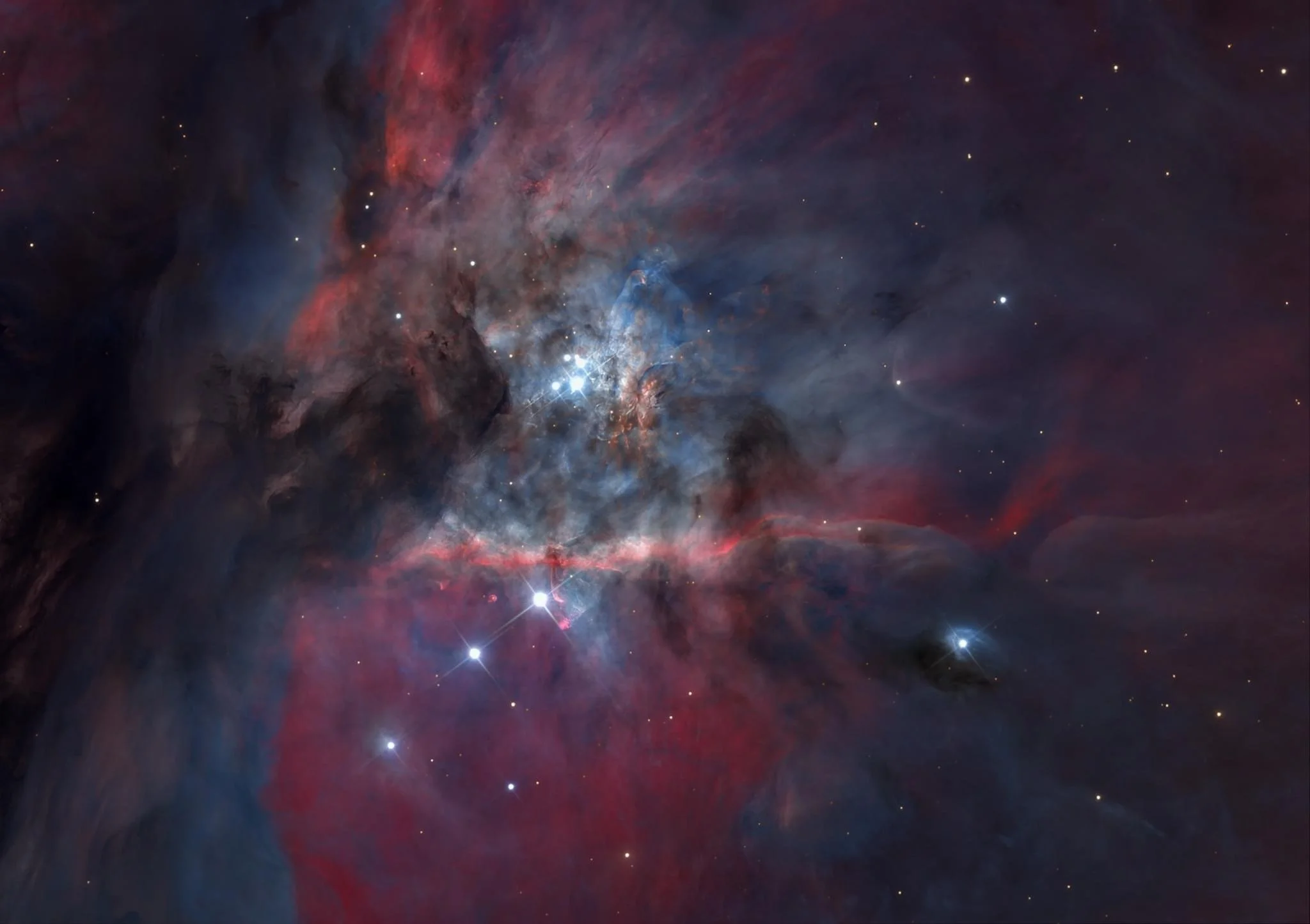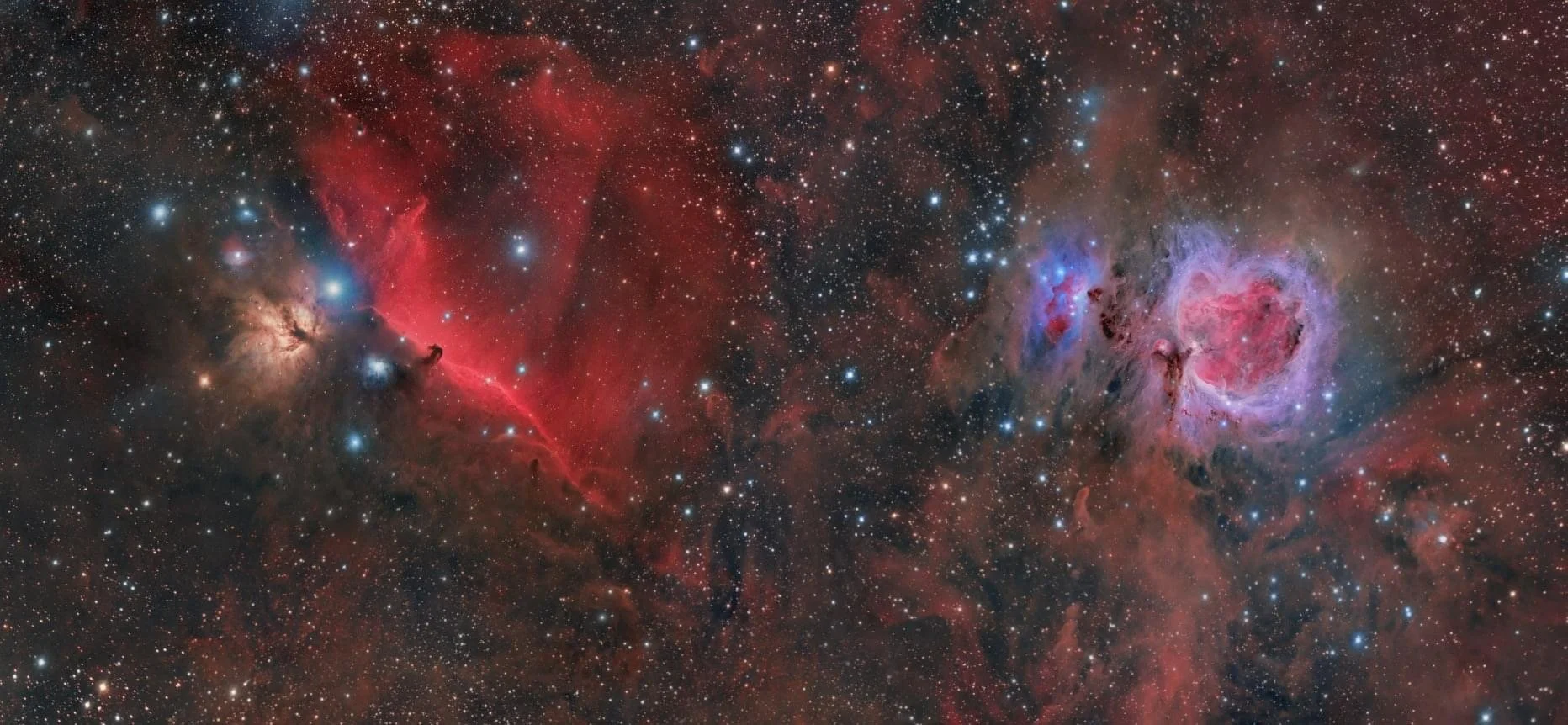
AAPOD2 Image Archives
Burning Orion-Nebula m42
As we step into the pristine canvas of a new year, the celestial stage is set ablaze with the resplendent glory of M42, the Orion Nebula. This cosmic masterpiece, situated in the iconic Orion constellation, becomes a stellar beacon, symbolizing the promise of fresh beginnings and the awe-inspiring beauty of the cosmos.
M42, also known as the Great Orion Nebula, serves as a metaphorical firework display in the heavens, igniting the night sky with vibrant hues of ionized hydrogen and intricately woven tendrils of dust and gas. This astronomical spectacle, visible to the naked eye, captures the imagination with its stellar brilliance and complex interplay of cosmic forces.
As we celebrate the onset of the new year, the Orion Nebula becomes a cosmic time capsule, offering a glimpse into the stellar nurseries where new stars are born. The Trapezium Cluster at its heart, a gathering of young and energetic stars, mirrors the collective spirit of anticipation and excitement that accompanies the turning of the cosmic calendar.
Much like the burst of fireworks heralding the stroke of midnight, M42 encapsulates the grandeur of celestial creation and the cyclical nature of time. It beckons us to peer into the cosmic tapestry, where the threads of stellar birth and renewal intertwine, inviting contemplation and wonder as we embark on a new journey around the sun.
So, let the ethereal glow of M42 guide us into the new year, a celestial overture that inspires reflection, dreams, and the timeless appreciation of the universe's perpetual dance.
The trapezium
I had that RGB stack of short exposures 20x30 sec. each filter for a while now and didn´t really know what to do with it.
The fwhm on the combinded image is 0.75" so it was a real magic night.
I croped the field and rotated it by 45 degrees to have the hydrogen bar horizontal.
still not sure if I have done the raw data justice, but even the small field has a dreadful dynamic range and was quite difficult to process.
Copyright: Wolfgang Promper
M42 and Running Nebula
I Image Description and Details :
Setup: Skywatcher 200/800 + Qhy10 CCD + Optolong L-Pro/ Neq6 rowan Mod / 50mm guide scope + asi 120 mm mini / 36*300s, gain 3 temp -10
Zone: Penne (Italy), bortle class 5/6
Copyright: Mazzocchetti Marco
The outpost
Image Description:
On a rocky summit of an icy planet sits a remote research outpost. This frozen world orbits a inconspicuous star in a minor arm of a giant barred spiral galaxy.
Named after a mythical creature of an ancient culture that once dominated the planet, this scientific outpost is called the Sphinx. The Spinx is mythicized to have mercilessly killed those who couldn't answer her riddle.
The Sphinx station has a prime view on one of the galaxies major star forming regions, named after another mythological figure, a giant hunter. Not all scientific riddles within the hunter are solved yet, but fortunately the Sphinx hasn't killed any scientists so far.
The thin atmosphere of the planet at this high altitude location contains enough water to form clouds, which shroud the observatory in freezing fog about 40% of the time. If the clouds part, the hunter's giant molecular clouds of ionized hydrogen are lighting up the sky.
I had the opportunity to visit the Sphinx outpost with benjaminbarakat in September for a night of astrophotography. After a sternous night, we were happy that both the planet and the mythical creatures had shown mercy. The hunter had made its appearance and we escaped this stunning place without getting killed by lack of oxygen, the cold or the wrath of the Sphinx.
EXIF
Canon EOS EOS Ra
Canon 24-70mm f/2.8 L ll @ 50mm
iOptron SkyTracker Pro
Sky:
4 panel panorama, each a stack of 7 x 60s @ ISO1600
Foreground:
Panorama of 4x 2s @ ISO400 during blue hour
Copyright: Ralf Rohner
M42 Widefield
2 panel mosaic crop
C 8 Hyperstar
C 14 Hyperstar
Starlight Xpress M25 C
Starlight Xpress 694 C
QHY 247 C
Baader L Booster Filter
Copyright: JP Pecorino
Orion CoNstellation
Date image was taken: 1/5/2020
Image Title: Orion Costellation
Image Description and Details : Orion Costellation
Sharpstar Optics 76EDPH Artesky
Qhyccd 600 Mono
Filter Optolong Astronomy Filter Narrowband improved version
44 light 600 sec HA
44 Light 300 sec Red
33 Light 300 sec Green
22 Light 300 sec Blu
Software APT - Astro Photography ToolPixinsight Photoshop
Copyright: Andrea Maggi







